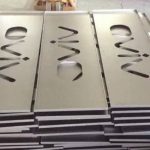
In recent years, my country’s construction hardware, automotive electronics, digital technology and other industries have developed rapidly. The production and sales of the mold industry have become the mainstream. The development of the mold industry has become the engine of the metal stamping industry.
A few days ago, Luo Baihui, secretary-general of the International Model Association, said that due to the continuous development of China’s mold industry, due to the continuous development of large mold demanders such as machinery, automobiles and electronic information industries, China’s mold output has maintained a rapid growth of more than 25%. From an international perspective, on the one hand, China’s mid-end Molds have strong competitiveness. The proportion of international manufacturers entering my country is increasing year by year. On the other hand, the transfer of mold consumption to my country in industrially developed countries will slow down. The mold industry continues to run at a high speed.
The market environment of booming production and demand and good prospects make many entrepreneurs and investors actively invest in my country’s mold industry, among which foreign capital and private capital are still the mainstream, and investment enthusiasm is generally high. The market is conducive to communication and can enjoy more favorable policies, so it is optimistic about the market situation. Now there are more than 50 mold cities, mold parks, and agglomeration industrial bases with considerable scale in the country, and more than 10 are being established, prepared or planned. In addition to cluster bases, some places are still developing mold entity alliances and virtual manufacturing.
The basic principle of metal spinning technology is similar to the ancient pottery production technology. Spinning parts are generally rotary cylinders or discs, and spinning blanks are usually thick-walled cylinders or circular sheets. The principle and structure of the spinning machine are similar to metal cutting lathes. Spinning today requires the help of hand spinning accessories.
The principle of spinning accessories is on the position of the large carriage of the lathe. It is designed as a rotary frame with axial movement power. The rotary wheel fixed on the rotary frame can move radially. Coaxially connected with the main shaft is a mandrel (shaft), and the spinning blank is sleeved on the mandrel (shaft). The rotary wheel rotates passively in reverse through the friction force generated by the contact with the blank sleeved on the mandrel (shaft). At the same time, the rotary wheel frame moves axially under the action of the axial large thrust oil cylinder.
Types of spinning pulleys Under the joint action of the axial force of the spinner frame and the radial force of the spinner wheel, the surface of the blank is subjected to point-by-point continuous plastic deformation. At the position of the tail top support of the lathe, it is designed as a tail top hydraulic cylinder with the same axis as the main shaft, and the hydraulic cylinder exerts axial thrust on the blank end surface sleeved on the mandrel (shaft). The base of the spinning fittings is made of aluminum alloy with a thickness of 2mm. Aluminum is in a relatively negative position in the electrochemical sequence, and it has an extremely high affinity for oxygen. Difficulties. After the oxide film on the surface of aluminum and aluminum alloy is removed in alkali solution, a new oxide film will be formed soon when it encounters oxygen in the air. This layer of oxide film will seriously affect the bonding force between the electroplating layer and the substrate.
Link to this article:Application of spinning accessories in various metal spinning technologies
Reprint Statement: If there are no special instructions, all articles on this site are original. Please indicate the source for reprinting:Alloy Wiki,thanks!^^


